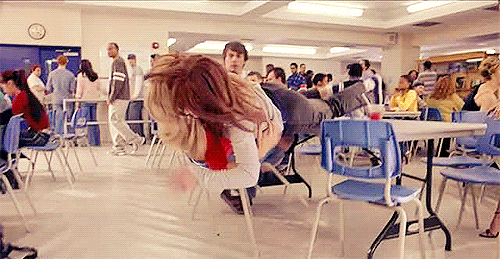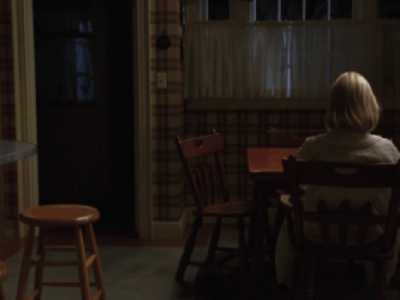This is no scene from Mean Girls. You might picture rabid prides of spray-tanned young women stuffed into suction-tight denim skirts lopped off at the thigh, each vapid specimen of tantalizing Photoshop perfection foaming at their berrystained lips and swiping thick, meticulously painted claws at their equally gorgeous and collagen-rich enemies. Tripping over tables and chairs, they fight to the brink of death like preening lionesses baking under the hot, African sun for little reason more than who looks skinniest in the latest model of Lululemon leggings. And they’re all starving themselves to reach that pinnacle.

If you picture this, you’re wrong.
This kind of battle is less overt, but it’s there nonetheless. The college dining hall is no longer a spot just for eating sub-par meals of tepid chicken and limp vegetables. It has become so much more: a place to see and be seen, to scrutinize and be scrutinized and most importantly, a place to self-loathe, self-loathe and self-loathe.
Rather than college women fighting one another for the prestigious prize of “Best campus thigh gap that can fit a small seasonal watermelon (ungreased, with no skin-to-rind contact),” college women—and men, at increasing rates—are simply fighting themselves.
American students have a mixed relationship with food, and that relationship is only getting more toxic. A 2013 study by the National Eating Disorders Association revealed that in just 13 short years, the rate of eating disorders amongst college students increased from 23 to 32 percent amongst woman and from 8 to 25 percent amongst men. That’s one in every three women and one in every four men—and those are only the people who participated in the survey.
It’s no wonder rates of disordered eating have skyrocketed; bombarded on all fronts by barbed, damaging media messages, we’ve gradually been trained to hate ourselves.
Images of women thinner than our class syllabi with the hips and chests of 1940s Hollywood pinups drape the walls of subway stations, glossy covers of magazines and, most inescapably, the front pages of the Internet. Men aren’t immune, either; we’ve all seen (potentially fantasized about) the men flexing in their skivvies for brands like Calvin Klein. These media images of untouchably flawless bodies filter into our minds almost subconsciously, becoming just a part of our psyche. We already know this, and we hear it a lot.

Of course, there’s a significant portion of the eating-disordered who suffer from the disease for very different reasons than an unhealthy drive for unattainable thinness. The reasons are abound: a desperate search for some semblance of control over their lives, mental health issues like depression and obsessive compulsive disorder or even genetics are just a few of the many.
But even for these sufferers, the digital threat still looms, storming and ubiquitous. Tumblr, the blog site that makes millenials squeal and older generations shake their heads in confusion, is riddled with tons of pro-ana and thinspo blogs. For those who don’t read about these topics obsessively or are over the age of 25, these are “pro-anorexia” or “thinspiration” blogs where authors post images of rail-thin models, workout regimens, “get thin” mantras and chart their progress from thin to thinner to thinnest. They’ve become so popular amongst teenagers and college students that Tumblr has attempted to weed them out—but can only find a fraction.
From the dank, dark corners of the Internet to the flashy front pages of news sites, we’re bombarded with digital fodder for our rapidly rising eating disorders. And it all plays out over the laminate floors of campus dining halls as we scrutinize and self-loathe over empty trays. It may not be the violent outback depicted in Mean Girls, but a battle is being fought. You just might not see it.
We’re stuck in a cycle, and we’re starving ourselves.



















